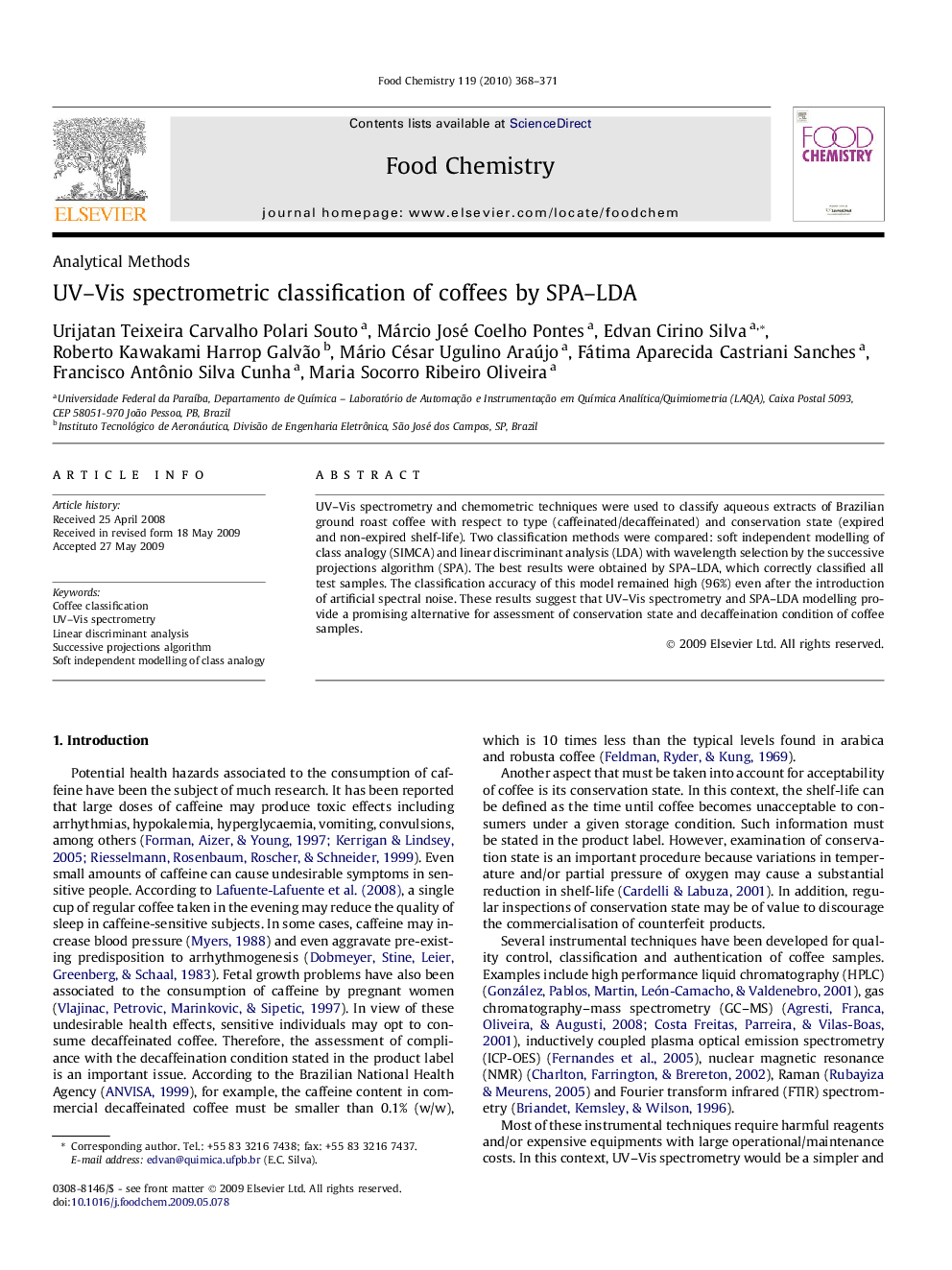| Article ID | Journal | Published Year | Pages | File Type |
|---|---|---|---|---|
| 1186798 | Food Chemistry | 2010 | 4 Pages |
UV–Vis spectrometry and chemometric techniques were used to classify aqueous extracts of Brazilian ground roast coffee with respect to type (caffeinated/decaffeinated) and conservation state (expired and non-expired shelf-life). Two classification methods were compared: soft independent modelling of class analogy (SIMCA) and linear discriminant analysis (LDA) with wavelength selection by the successive projections algorithm (SPA). The best results were obtained by SPA–LDA, which correctly classified all test samples. The classification accuracy of this model remained high (96%) even after the introduction of artificial spectral noise. These results suggest that UV–Vis spectrometry and SPA–LDA modelling provide a promising alternative for assessment of conservation state and decaffeination condition of coffee samples.
